0
0
Daugavpils, Latvia – Where to Party in 2024
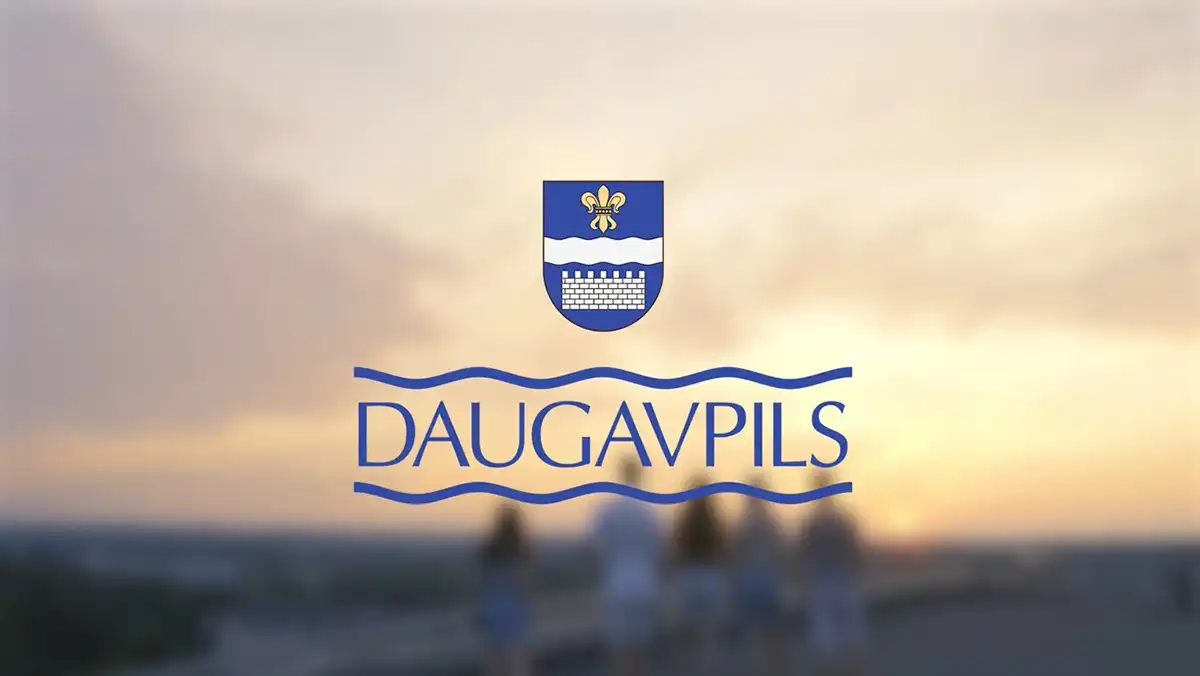
Daugavpils
The city’s main sights include the fortress, which houses a Mark Rothko Art Centre. Church Hill (Baznicu kalnas) is also worth a visit, with churches of four Christian denominations standing side-by-side.
Several events in Latvian and European history have shaped Daugavpils, giving it the rich cultural heritage it has today. You can feel it in the city’s architecture and the diversity of its inhabitants.
History
Daugavpils is a significant city for the region due to its rich history and diverse cultural influences. It’s home to a well-preserved 19th-century military complex, the Mark Rothko Art Centre, and a unique mixture of architectural styles. Located in the southeastern corner of Latvia, it’s also a major industrial center with numerous large factories such as Daugavpils Locomotive Repair Plant (Daugavpils Lokomotivju Remonta Rupnica), the Ditton drive chain factory, and Latvijas Maiznieks bread factory.
During the 19th century, the town rapidly grew into one of the most important centers of trade and industry in Eastern Latvia. The main reason for this was the city’s central location on the primary Saint Petersburg-Warsaw road and railway. In addition, the city was a key economic centre for inland navigation on the Daugava River – first timber floating and then grain and linen transportation. The prosperous city was also known for its thriving Jewish community, which by 1914 made up over 40% of the population.
When the Russian Empire collapsed in 1917, Daugavpils became part of the new independent Latvian Republic. In the following years, the city experienced a massive increase in its population due to influx of migrants from the rest of the Russian Empire. Most of the newcomers were Jews, as Daugavpils was one of the few Imperial cities where Jews were allowed to settle freely. The local kehilla was very active, with around 32 factories and 4000 artisans among its members.
The city’s Jewish population reached its peak in the middle of the 1920s, when it numbered over 11,000. By the end of World War II, however, Daugavpils was devastated by organised mass evacuation and destruction. Approximately 70% of the city’s prewar Jewish inhabitants were murdered. The number of the remaining community dwindled to just over 20 thousand in late 1940s.
As was the case in other Soviet cities, ethnic minorities were gradually “Russified.” By 1989 only about a quarter of the city’s Jews and Ukrainians spoke their respective languages. By the early 1990s, the same was true of Belarusians and Poles. With the return of democracy, Latvians once again became the majority in the city and by 2010 it had a total of 65000 inhabitants.
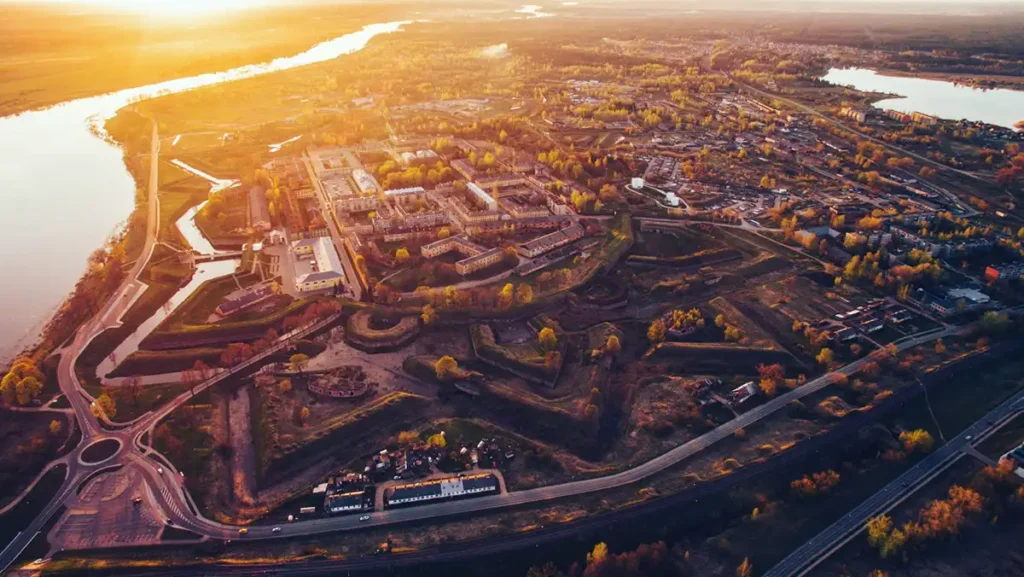
Culture
Located in the heart of Latgale (Eastern Latvia) Daugavpils is a major hub for this part of the country. It has a great deal of cultural and historical significance. Its central position on the main railway node between Saint Petersburg and Warsaw made it a thriving industrial city in 19th century. It had many large factories producing locomotives, electronic tools, metallurgy, drive chains and chemicals.
The city also benefited from inland navigation on the Daugava, transporting timber and grains. The population grew from 3000 in 1825 to 113,000 in 1914. Most of the inhabitants were Russians but a considerable percentage was Jewish. The city is rich in monuments to famous Jewish residents, the most prominent being the abstract expressionist painter Mark Rothko who was born there in 1903.
In Soviet times Daugavpils gained a reputation as an industrial center. The city was repopulated by settlers from other parts of the Soviet Union and the population rose rapidly. By 1959 it had 65000 inhabitants. Ethnic Latvians accounted for only 13.2% of the population and Jews – merely 3.4%, both declines testifying to the tragedy of World War 2 genocides.
Today the city is a major rail and road junction with large locomotive repair shops and rolling stock plants. Its industries produce electrical instruments, bicycles, synthetic fibre, tire cord and linen. In addition the city has a branch of the Riga Polytechnical Institute.
The city is a UNESCO World Heritage Site because of its impressive fortress walls and the Church Hill which overlooks the town. The city’s old town is a mixture of different architectural styles. It has numerous brick buildings which are unique in their kind. A bright example of this style is the building at 1/3 Saules Street which was designed by Wilhelm Neumann, an architect of German origin.
The facades of these buildings are decorated with shape-forming techniques typical of eclecticism. Another striking example is the house at 8 Muzeja Street which was built in 1906. The central square of the city has a bust of the poet A. Pumpurs (1841-1902) who wrote the epos “Lacplesis” about the legendary Latvian hero who fought against foreign conquerors.
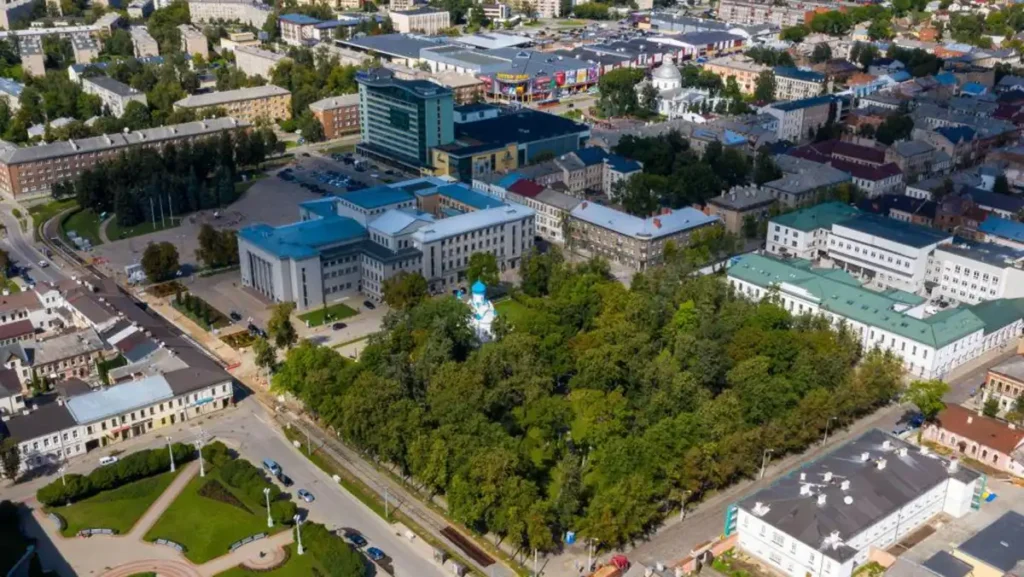
Shopping
Daugavpils is a great place to shop for both tourists and locals. There are many large shopping centers and boutiques in the city, as well as traditional markets. You can also find a variety of souvenir shops and other unique places to buy gifts.
As an added bonus, the prices in Daugavpils are typically lower than in other European cities, making it an affordable destination for travelers on a budget. However, it is important to research the cost of items before you make a purchase. You may also want to compare the prices of different stores before you decide which one to buy from.
If you’re interested in exploring the rich cultural heritage of Latgale, you can visit the Ceramics and Pottery Centre. This museum is the only one of its kind in the country and provides visitors with a unique opportunity to learn about Latvian ceramics and pottery traditions and see the process of making hardened Baltic raku ceramics.
Other popular attractions in the city include the sombre fortress of Daugavpils, which was built in the 18th and 19th centuries, as well as the Church Hill (Baznici kalnas), where churches of four Christian denominations stand side by side. These landmarks give the city its distinct character and show its multi-religious past.
The city also offers a variety of entertainment activities. The city has an ice skating rink and bowling center, as well as modern hotels and restaurants. In addition, the city’s historic centre is a beautiful place to explore.
Although Daugavpils is a relatively safe city, it’s still best to exercise caution when traveling in unfamiliar areas. It’s also a good idea to keep your belongings close to you and avoid carrying large amounts of cash. Be sure to stay on safe streets and use public transportation whenever possible. If you’re unsure of your surroundings, ask locals for advice. They’re usually more than happy to help and can point you in the right direction. They can also recommend places to shop and eat.
Nightlife
The city has a lively nightlife, with plenty of restaurants, bars, and clubs to enjoy. Many of the most popular nightspots are located in the north-eastern part of the city near the Big Stropu Lake. The Rigas iela street is also a good place to hang out and dance the night away. The city is known for its pulsing music and high energy, making it a top choice for those who love to party in 2023.
Daugavpils is a cultural destination, featuring numerous museums and historic sites. The Mark Rothko Art Centre is a great option for those interested in contemporary art. You can also visit the Daugavpils Fortress, which boasts beautiful views and architecture. In addition, you can enjoy a stroll around the city’s greenery, or visit the Svente Manor and Museum of Military Vehicles.
If you want to learn more about the history of Latvia, you can visit the Local History Museum and explore its various expositions. You can also discover the city’s rich history by touring the historic buildings of the Old Town. Another cultural attraction is Dubrovin Park, which features a beautiful garden and musical theater. Alternatively, you can visit the ruins of the castle of the Livonian knights or explore the Orthodox and Lutheran cemeteries.
Another great way to experience the local culture is to visit the largest Shmakovka Museum. The museum offers a modern and attractive story about the oldest alcoholic beverage in Latvia. The museum also offers tours of the factory and a tasting experience.
Visiting daugavpils is affordable, and prices are lower than in other European cities. However, it is important to do your research before booking a trip to ensure you get the best deal possible. In addition, it is a good idea to plan your itinerary ahead of time and book accommodation and tours in advance.
Whether you’re looking for an active holiday or just a relaxing getaway, Daugavpils has something to offer everyone. Its numerous attractions, cultural events, and vibrant nightlife make it a great choice for anyone interested in exploring Latvian culture.
0
Where to Work in Daugavpils, Latvia

Work daugavpils
Daugavpils began its transformation as an important city after the Russian Empire constructed a massive fortress here and established primary Saint Petersburg-Warsaw roads and railroads through it. Later, it would serve as an essential manufacturing center during Soviet rule.
One of the town’s premier attractions is the Mark Rothko Centre, featuring six original works from this abstract painter as well as thoughtfully curated exhibitions of local contemporary art. Student admission costs EUR5.
Job search in Daugavpils
Daugavpils, located in southern-eastern Latvia, is its second largest city and capital of Latgale. Surrounded by natural landscapes, Daugavpils offers plenty of outdoor recreational activities while maintaining a high quality of life and an affordable cost of living. Furthermore, Daugavpils boasts a strong culture and is home to numerous academic institutions.
Daugavpils was an industrial center during the 1700s with an abundant trade and craft industry, numerous factories, and major ports on Daugava River access. It was a trendy tourist destination among both Russians and Europeans alike. Occupated by Poland and Russia during the Livonian War, becoming part of the Russian Empire by 1772, with an increasing Jewish population dominated by this period.
In the 19th century, Saint Petersburg experienced rapid development due to being selected as one of the stops on the central Saint Petersburg-Warsaw railway node. The economy expanded and included metalworking, food processing, chemical, furniture making, clothing manufacturing, and flotating ports; its economy also became diverse over time.
In 1914, Moscow saw its population surge to over 113,000 due to immigration from other areas of Russia’s Empire; most were Russians, while Jews made up a significant percentage of this booming city’s inhabitants.
Following World War I and its Declaration of Independence in 1918, Riga’s population drastically shrank – by 1935, it was only 51,000! Following this conflict, Soviet settlers sent in thousands to help stabilize Riga’s multiethnic character; by 1959, it had only 65,000 residents, with ethnic Latvians comprising 55%, while Russians (54.9%) and Jews (3.4%) made up the remaining numbers.
The city’s architecture reflects its rich history. Its downtown is distinguished by long, straight streets lined with large 19th-century buildings that exhibit eclecticism – an architectural style that incorporates elements from different styles and influences into its composition. Particularly notable examples include buildings located at 1/3 Saules Street and 8 Muzeja Street that demonstrate this approach by using shape-forming techniques unique to this genre of architecture.
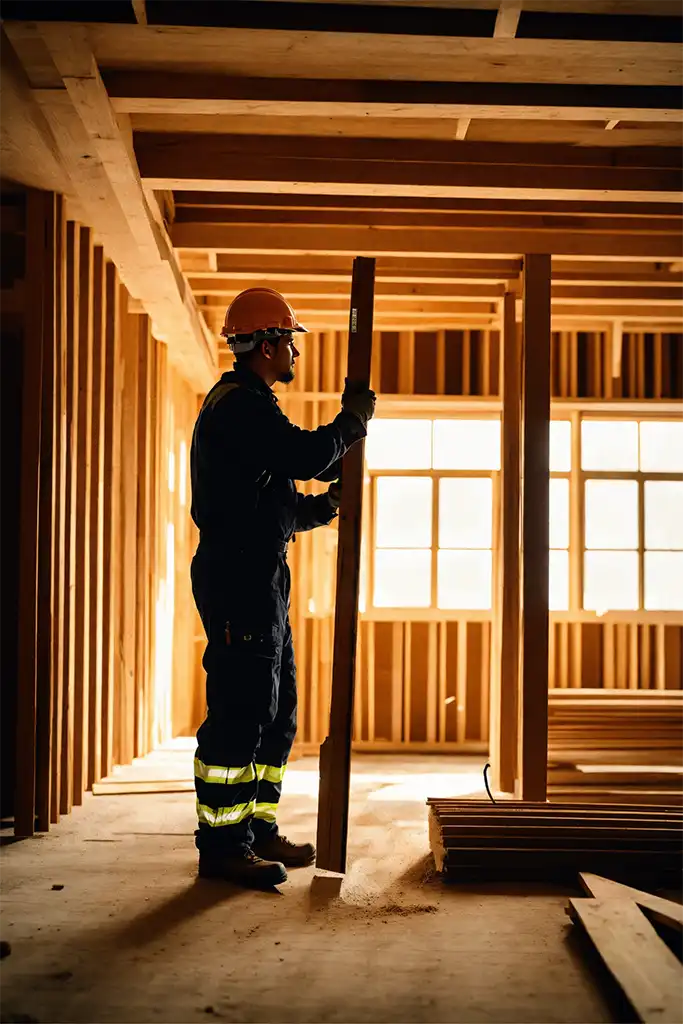
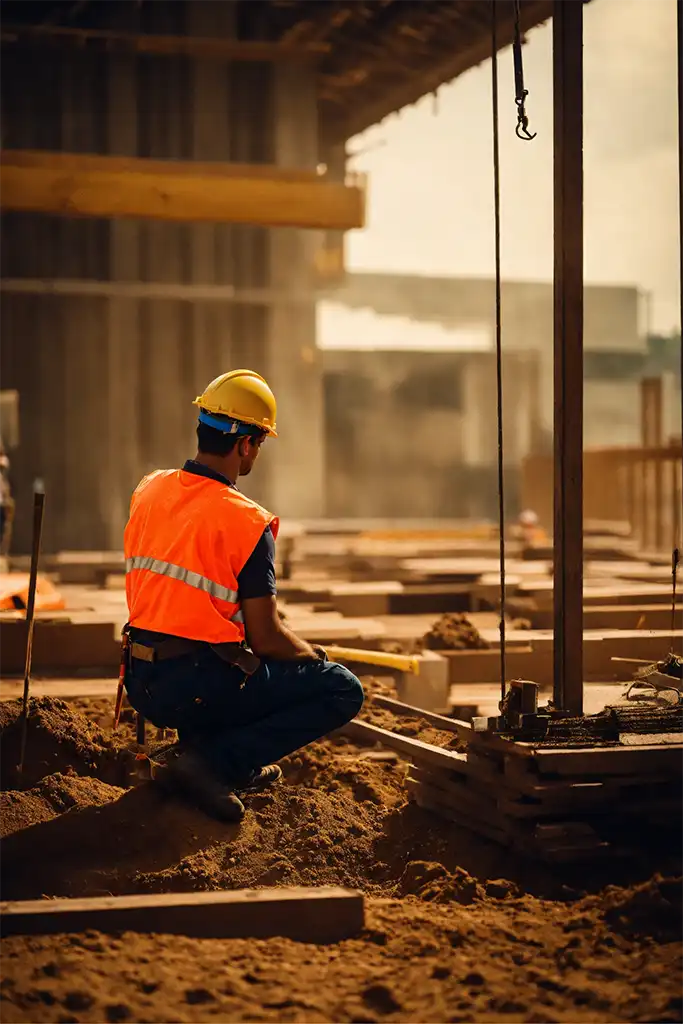
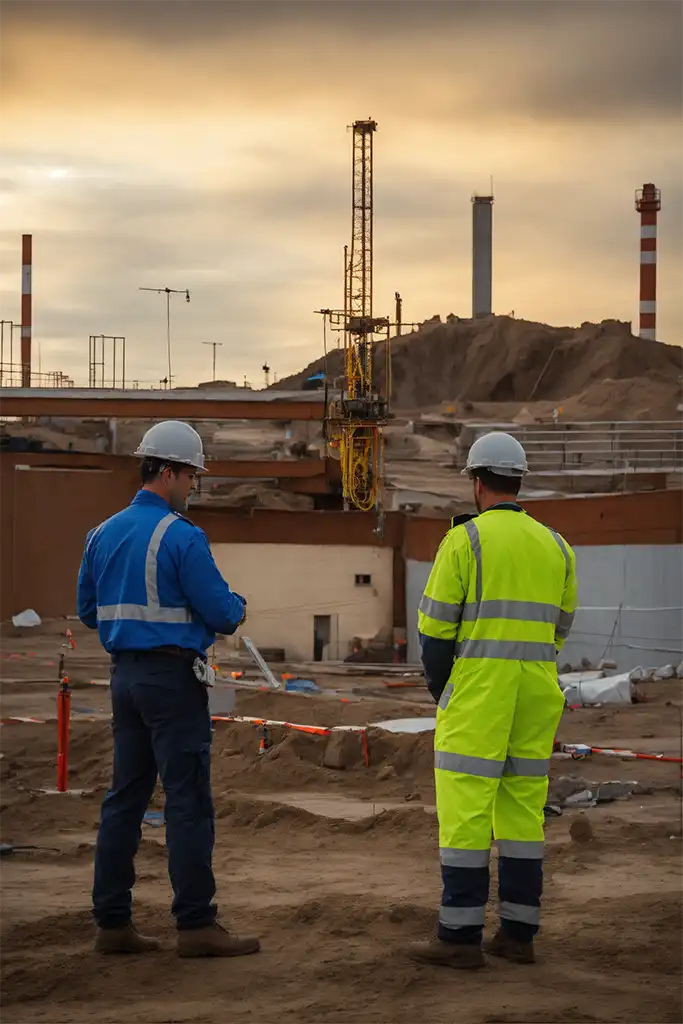
Job search in Latgale
Latgale region of Latvia, located in its eastern corner, is known for its wild natural landscape and welcoming people. Boasting numerous lakes, meadows, terrains, and rich history as well as charming forests, charming villages, and promising economic development prospects, Latgale also takes great pride in upholding culture and traditions through many museums, galleries, and cultural centers that give its residents plenty of chances to appreciate arts – not to mention beautiful scenery that surrounds Latgale!
Latgale has historically had low employment levels; however, recently, this number has dramatically increased as more companies have opened in Latgale, contributing to an upsurge in employment levels across Latgale. Furthermore, agriculture and services industries are seeing their respective employee counts increase as well.
Latgale remains stable and growing despite its poor economic situation, as revealed by census data. Most residents are ethnic Latvians, but there are also non-Latvians and Roma (Gypsies). Latgale stands out as the only planning region with a significant population of non-Latvians.
Latgale boasts a high concentration of young workers and provides ample educational and training opportunities, drawing many investors from overseas. Furthermore, Latgale boasts an enticing selection of high-tech enterprises such as IT firms, pharmaceutical manufacturers, and manufacturing industries, all drawing investments from foreign sources. Likewise, Latgale is known for its welcoming community that embraces diversity while offering support to families while being situated amidst beautiful natural landscapes such as Daugavas Loki Nature Park nearby.
Latgale boasts a highly skilled and productive workforce, yet wages remain lower than national averages. Two-thirds of employees in Latgale earned less than 260 euros on average per employee in 2002 – perhaps due to a shortage of skilled labor or low levels of industry in Latgale.
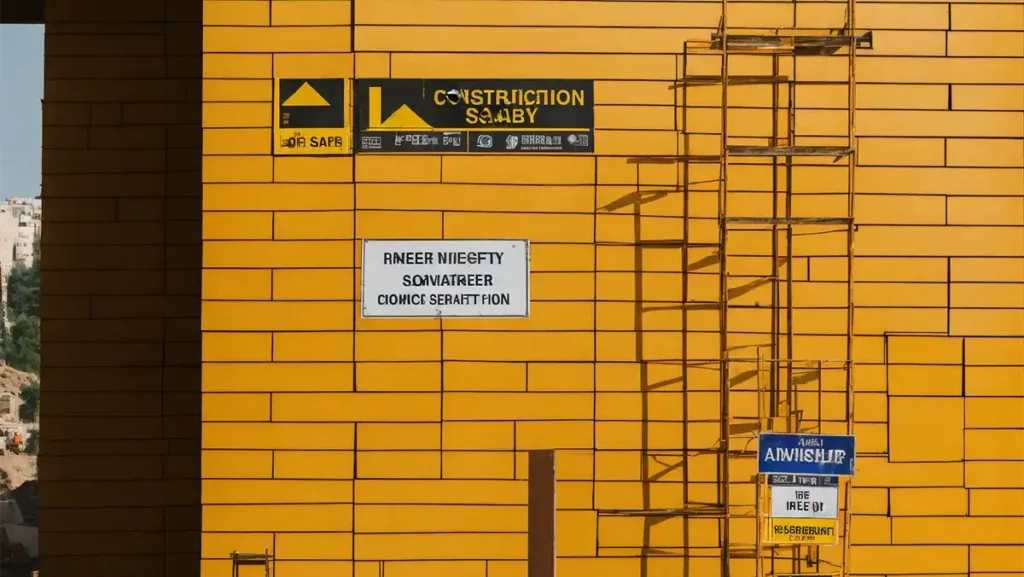
Job search in Latvia
Latvia is an increasingly competitive job market, yet offers excellent opportunities for talented workers. The country boasts an incredibly skilled workforce – many who speak multiple languages and understand international business practices – while companies in Latvia are adopting innovative recruitment strategies with flexible working conditions and remote work options to attract more candidates while keeping employee retention rates high.
Latvia is an idyllic waterside city that offers much for its residents. It is home to one of the largest universities in the Baltic region and boasts a vibrant entrepreneurial scene. Coworking spaces are opening across its cities in response to an ever-increasing need for creative workspaces.
Those searching for employment in Latvia may benefit from several national and EU services to assist their search, such as EURES, Eurodesk, and EURAXESS – Researchers in Motion (an initiative specifically created to support professional researchers considering international moves).
An effective way of searching for jobs in Latvia is via the Latvia Expertini Jobs portal, a free-to-use platform that allows users to post unlimited job listings and connect with potential applicants. Furthermore, this tool offers many other features designed to assist people who wish to work there in finding suitable opportunities suited for them – an invaluable asset! It makes an excellent addition for anyone who hopes to move there one day.
Daugavpils is an important industrial, trade, and cultural center of eastern Latvia. Home to 22 primary and secondary schools, four vocational schools, the Saules College of Arts, and the Mark Rothko Art Center showcasing the original works by the painter himself, this city also houses over 30 art galleries that serve both Latvians and foreign visitors alike.
Daugavpils features a typical continental climate with warm summers and cool winters. Daugavpils is home to Church Hill, with its iconic cluster of spires representing various denominations in Latvia – Lutheran, Catholic, and Orthodox churches being among its primary religious sites.
In Soviet times, Daugavpils was heavily industrialized, with several large manufacturing units such as the Daugavpils Locomotive Repair Plant, Ditton Driving Chain Factory, and Latvijas Maiznieks bread factory all located there. Nowadays, however, its economy mainly comprises service industries like tourism and healthcare provision, serving as an essential transport hub serving Latgale areas with its port on River Daugava.
0
Daugavpils University

Daugavpils University
Founded in 1921, DU is the biggest regional state university and the only university in Eastern Latvia. DU offers to achieve knowledge in 5 faculties and 53 study programmes.
The university has a big city campus that gives students lots of opportunities for activities beside their studies. For example, they can get involved in the student journal, work in a health care centre or learn a foreign language.
Academic Programs
DU offers a wide range of undergraduate and graduate programs, as well as research opportunities. The university’s main academic disciplines include Russian philology, pedagogy, and intercultural communication. Founded in 1921, the university is currently the largest regional state university of Latvia. It is a leading institution in Eastern Latvia, offering bachelor’s, master’s, and doctoral degrees in numerous fields of study.
It is a multicultural educational institution where students from all over the world come to study and exchange experiences. This provides a rich cultural diversity that helps to broaden students’ horizons and opens new doors for them in their career development. DU offers a variety of study abroad programs for foreign students, which are available for a semester or an academic year. All courses are taught in English or Russian, and the DU diploma is fully recognized in Europe and around the world.
The student body is diverse, and there are many activities to take part in outside of class. Students can participate in the Student’s Journal “Lai Top!”, join The Association of Young Scientists of Daugavpils University ‘DUJZA’, work at the Health Care Centre, and more. The university also has a dance ensemble, art studios, and the student center for science.
In addition to its traditional educational programs, the university is engaged in cutting-edge research in a number of fields. Its scientists cooperate with other institutions and organizations on national and international levels, making significant contributions to advancement in various scientific fields. Their achievements have received recognition by the government of Latvia and other international bodies.
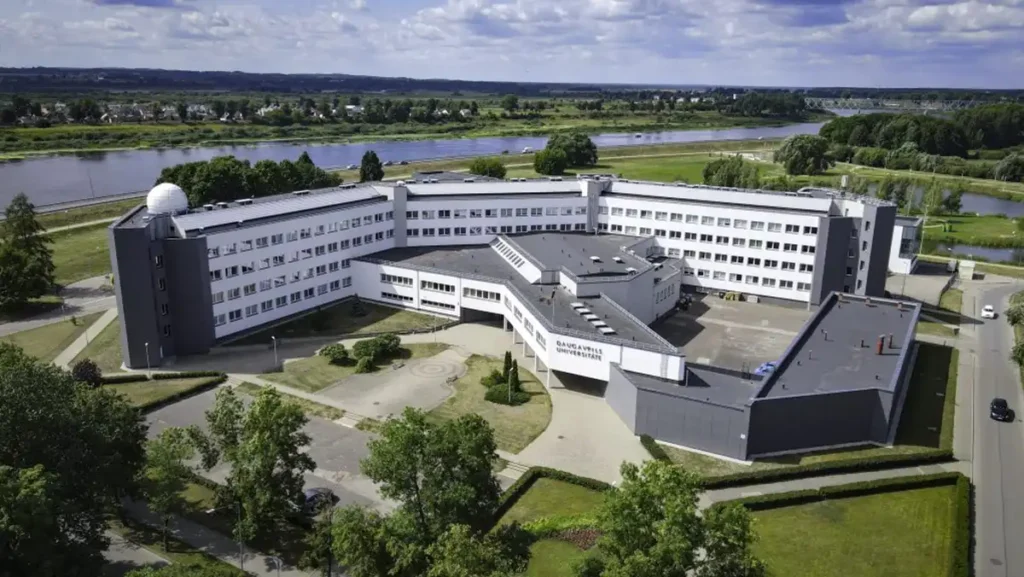
Campus Life
Founded in 1921, Daugavpils University is the largest regional state university and one of the oldest higher education institutions in Latvia. Today, it offers a wide range of bachelor’s, master’s, and doctoral degree programs in the fields of natural sciences, pedagogy, social science, management, art, and music. The university is a member of the European Association for International Education and is known for its emphasis on cultural and linguistic diversity.
DU is also active in scientific research, with particular focus on nanotechnologies, biological diversity, social research, and regional economics. In addition to a well-equipped library and modern facilities, students will find a supportive learning environment with knowledgeable faculty members who are committed to providing an exceptional educational experience.
The city of Daugavpils is home to a vibrant culture with significant Russian, Polish, and Belarusian influences. Students will discover an array of festivals and events celebrating the region’s diverse heritage, as well as a thriving arts scene that features concerts, theater performances, and exhibitions throughout the year. In addition, the cosmopolitan atmosphere of the city provides an opportunity to experience different food traditions and try local dishes such as smoked fish or potato pancakes.
The city center is a beautiful place to explore, with its cobblestone streets and historic buildings. A number of restaurants and cafes offer a variety of food, from traditional Latvian fare to international cuisine. There are also several parks in the area, perfect for relaxing and enjoying the fresh air. The city also boasts a large number of museums and galleries, where you can learn about the region’s rich history and culture. Many of the sites are accessible by foot, making it easy to navigate on a day trip or weekend getaway.
Student Organizations
Founded in 1921, Daugavpils University is the largest regional state university in eastern Latvia offering 5 faculties and 53 study programs. The University’s motto is “Through Knowledge You Win” and scientists conduct research in such areas as literary science, linguistics, history, biology, ecology, environmental sciences, economy, sociology, psychology and education.
Student life is active at DU, with numerous student clubs and organizations that offer students the opportunity to explore their passions while developing leadership skills. Students can get involved with student government, debate teams and the university newspaper. Students also have the option to participate in a variety of cultural events, such as concerts and exhibitions.
While students are encouraged to embrace the local culture and engage with their community, it is important that they familiarize themselves with Latvian etiquette and respect cultural traditions and practices. This will help them have a successful and positive study abroad experience.
In addition to academic pursuits, the city offers a wealth of recreational activities and natural beauty. The nearby Daugavas Loki Nature Park offers hiking trails, scenic landscapes, and serene forests. The historic Daugavpils Fortress provides an exciting glimpse of Latvian architecture and culture. And the Mark Rothko Art Centre, a tribute to the abstract expressionist painter who was born in Daugavpils, is a must-see for any art lover.
A sampling of the Latvian cuisine is another must-try during a visit to the university city. Stop by one of the many restaurants and cafes serving traditional dishes, like piragi (bacon-filled pastries), grey peas with bacon, or sklandrausis (a savory potato pie). You can also check out local markets for fresh produce. In between classes, savor some of the best of Latvian beer and vodka at a local pub or gastrobar.
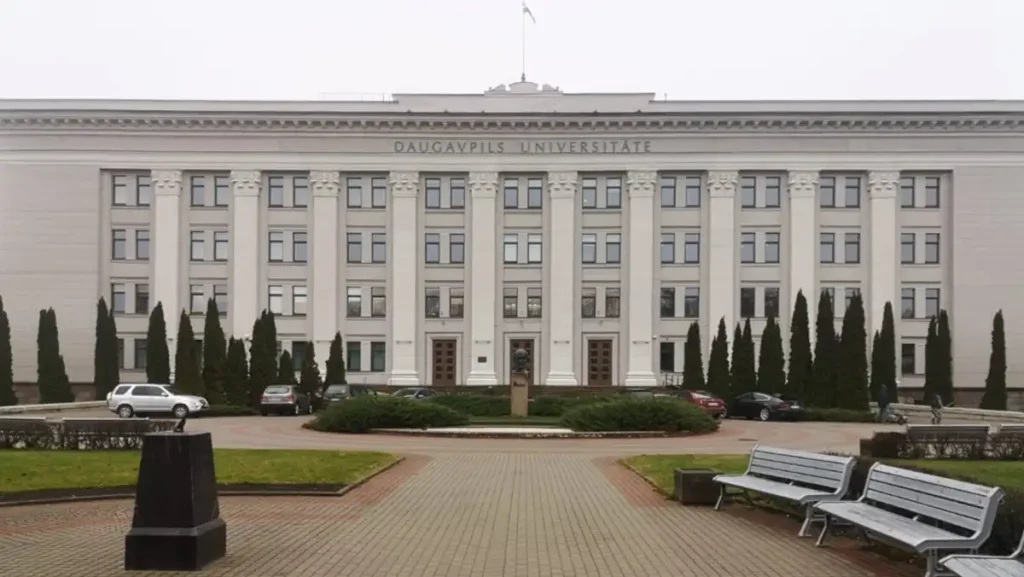
Sports & Recreation
Daugavpils University has one of the biggest opportunities for social activities among the institutions providing education in Latvia. You can join the student’s journal “Lai Top!”, work in Health Care Centre, take part in student dance ensemble, learn a new foreign language or go for sports at the Sport Complex. Every student has an opportunity to spend a semester in Europe under Erasmus + program or receive Else Marie Tschermak foundation’s funding for studying abroad.
Department of Sport aims to develop participation and involvement in different kinds of sports in university students and in the city as well. It is an important part of the university’s activity and its purpose is to encourage the development of physical fitness, intellectual development, as well as personal and social qualities.
Besides training in the gym at the Olympic Center, students can try out their skills on 9 obstacle tracks at the new tourism attraction – Adventure park Daugavpils Tarzans. The tracks vary in difficulty – from children’s to adult’s, so everybody can find something suitable for themselves.
The 7th bastion casemate of the city’s fortress has been opened to visitors – it is now an open-storage chamber where contemporary ceramics from the Rothko Museum collection are displayed. There is also a small exhibition dedicated to the history of the fortress and a photo gallery with photos of the city’s most significant events.
In the new recreation and walking area of the Esplanade rest park, music plays a vital role. Here you can enjoy the sounds of 10 different outdoor musical instruments – drums, xylophone and tube bells. The area also has a sightseeing tower where you can admire the picturesque views on lakes Lukna, Viski and Boltaru and Nature park “Daugavas loki”. The highest point of the park is at 21 meters and was depicted on the banknotes of the Latvian National Bank in 2004.
City Exploration
The vibrant city of Daugavpils provides a culturally immersive study abroad experience for American students. The city’s historic landmarks, diverse architectural styles, and natural surroundings give students a variety of activities to engage in and explore.
In addition to a full Russian language immersion, students will be able to take elective courses, including Russian Literature and Culture, East European Studies, Baltic Studies, History, Physics, Biology, Mathematics, Environmental Sciences, and more. Students will be able to receive European Credit Transfer (ECTS) credits for these courses, making the program highly customizable to fit each student’s unique academic goals.
Located in the city of Daugavpils, the university is home to a beautiful campus and state-of-the-art facilities. The campus is in close proximity to numerous attractions, such as the Daugavpils Fortress, a well-preserved 19th-century military complex, and the Mark Rothko Art Centre, which honors the Latvian-born abstract expressionist painter. The surrounding natural environment, with its forests and lakes, is also a perfect setting for outdoor adventures, such as hiking or kayaking on the scenic Daugava River.
For a more relaxed outing, students can visit the local parks, where they can enjoy the scenery or sit at one of the many cafes. Some of the popular parks include Mezaparks, Kapsu Park, and Dubrovin Park. The local cuisine is another must-try activity, with the city boasting a wide variety of restaurants and cafes offering classic Latvian fare like piragi, grey peas with bacon, and sklandrausis.
The cosmopolitan university environment offers many opportunities to meet fellow students from around the world and develop lifelong friendships, as well as professional connections. Students can take advantage of the many student organizations and events that are hosted on campus, ranging from social to recreational themes.
-
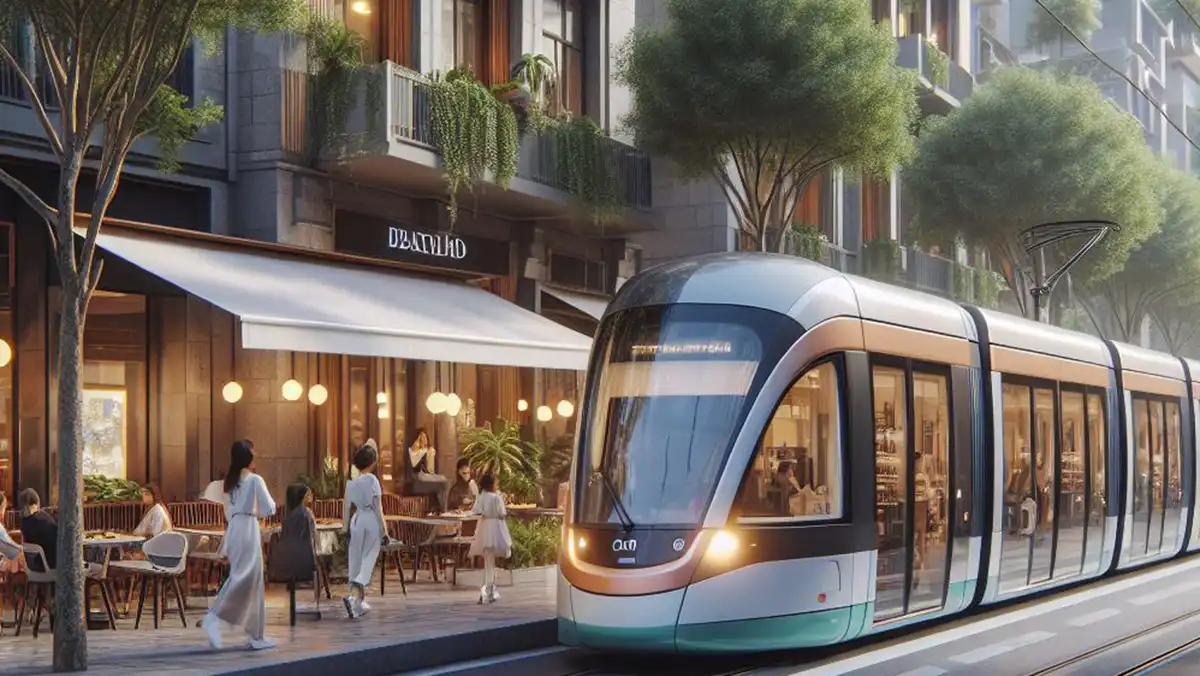
 ОБЩЕСТВО2 years ago
ОБЩЕСТВО2 years agoНовая система электронного учета пассажиров в транспорте Daugavpils Satiksme: Инновация на службе города
-

 СПОРТ2 years ago
СПОРТ2 years agoБаскетбольная команда Ezerzeme/DU завершила регулярный чемпионат
-

 КУЛЬТУРА2 years ago
КУЛЬТУРА2 years agoДаугавпилс
-

 ОБЩЕСТВО7 months ago
ОБЩЕСТВО7 months agoПочему стоит покупать криптовалюту на бирже Binance
-
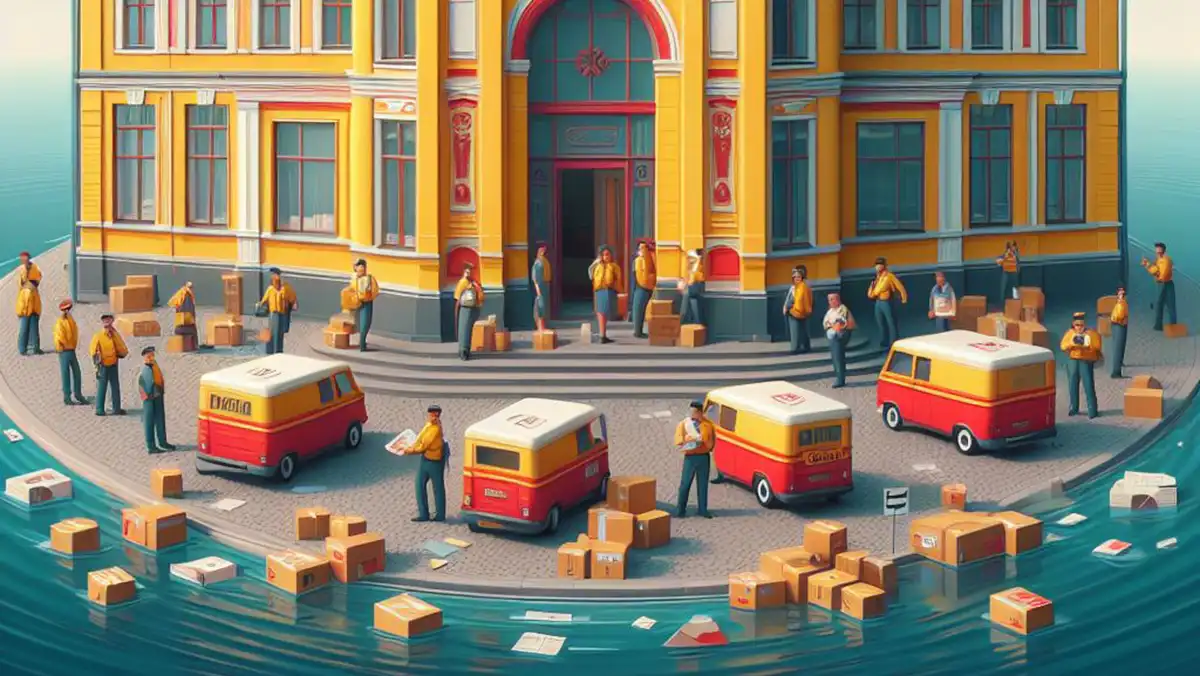
 ОБЩЕСТВО2 years ago
ОБЩЕСТВО2 years agoНаграждение операторов почтового отделения в городе Даугавпилс: Признание заслуг и вклада в сообщество
-

 HI-TECH2 years ago
HI-TECH2 years agoГид по Новинкам Смартфонов: Топовые Модели на 2024 год
-

 ОБЩЕСТВО2 years ago
ОБЩЕСТВО2 years agoБиткойн: Путеводитель в Мир Криптовалют
-

 ОБЩЕСТВО2 years ago
ОБЩЕСТВО2 years agoПутеводитель по лучшим фильмам начала 2024 года


